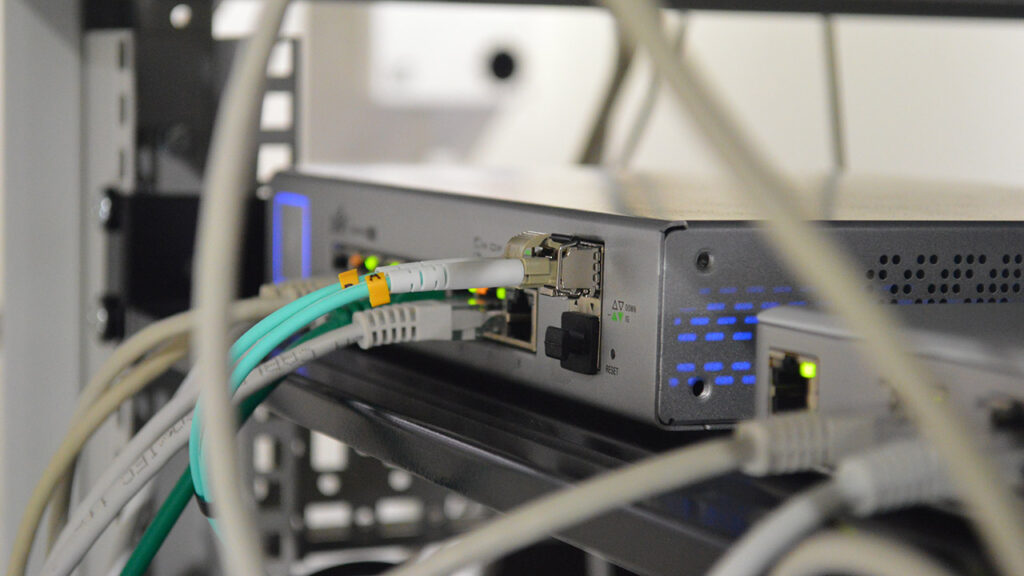In today’s digital landscape, ensuring the security and availability of data and applications is of utmost importance. This is where backup and disaster recovery services come into play.
These services offer a comprehensive solution to protect and recover critical data in case of a system failure, natural disaster, or cyberattack. Organizations can regain control and minimize downtime by implementing a robust backup and recovery strategy, ultimately safeguarding their operations and reputation.
In this article, we will delve into the intricacies of backup and disaster recovery services, exploring the types of solutions available and providing guidance on choosing the best option for your business.
Understanding Backup and Recovery
During this discussion on understanding backup and recovery, it is crucial to comprehend the three key elements that make up a comprehensive backup strategy.
These elements are the recovery point objective (RPO), recovery time objective (RTO), and data protection.
The RPO refers to the maximum amount of data an organization can afford to lose in a disaster. It determines the frequency at which backups must be taken to ensure minimal data loss.
On the other hand, the RTO represents the maximum acceptable downtime for an organization. It sets the target time for recovering systems and applications after a disaster.
Data protection is at the core of any backup and recovery solution. It involves implementing mechanisms to safeguard data from loss, corruption, or unauthorized access. This can be achieved through various methods, such as encryption, access control, and regular data backups.
Organizations should also have a disaster recovery plan to ensure a comprehensive backup and recovery strategy. This plan outlines the steps and procedures to ensure business continuity in a disaster.
Types of Backup and Recovery Solutions
Implementing different backup and recovery solutions is essential for ensuring data integrity and minimizing potential downtime during a disaster. Backup and disaster recovery (DR) services are critical in safeguarding important data and maintaining business continuity.
One type of backup solution is cloud backup, where data is stored in a remote server maintained by a service provider. Cloud backup offers several advantages, such as scalability, cost-effectiveness, and ease of data restoration. It eliminates the need for on-premises infrastructure and provides off-site data protection.
Another type of backup solution is server-level backup, which involves taking regular snapshots of entire servers or specific server volumes. This enables quick recovery in case of server failure or data loss. Server-level backup is particularly useful for organizations with complex IT infrastructures and critical applications.
Data center backup is another solution that replicates data to multiple data centers. This ensures data redundancy and reduces the risk of data loss due to hardware failures or natural disasters. It also provides faster recovery times by allowing failover to a secondary data center.
Organizations should consider their recovery time objectives (RTO) and recovery point objectives (RPO) to implement an effective backup and disaster recovery plan. RTO refers to the maximum acceptable downtime, while RPO refers to the maximum acceptable data loss. By aligning their backup strategies with these objectives, businesses can ensure minimal disruption and maximize data availability.

Components of a Disaster Recovery Plan
The components of a disaster recovery plan, such as risk assessment and business impact analysis, are crucial in mitigating potential losses and ensuring swift recovery in the face of a disaster. Here are four key components that should be included in a comprehensive disaster recovery plan:
- Risk Assessment: This involves identifying potential risks and vulnerabilities to the organization’s IT infrastructure and business operations. Businesses can prioritize their disaster recovery efforts and allocate resources by conducting a thorough risk assessment.
- Business Impact Analysis: This step involves assessing the potential impact of a disaster on critical business processes and functions. By understanding the possible consequences of downtime, businesses can prioritize their recovery efforts and develop strategies to minimize the impact on their operations.
- Data Backup and Recovery: Implementing a robust data backup and recovery strategy is essential for ensuring that critical data is protected and can be restored during a disaster. This includes regular backups, offsite storage, and testing the recovery process to ensure effectiveness.
- Cloud-based Backup and Disaster Recovery Services: Many organizations now leverage cloud-based solutions to enhance disaster recovery capabilities. Cloud-based backup and disaster recovery services offer scalability, flexibility, and cost-effectiveness, allowing businesses to quickly recover their systems and data in a secure and reliable environment.
Choosing the Best Backup and Disaster Recovery Services
When evaluating backup and disaster recovery services, businesses must consider their needs and requirements. Backup and disaster recovery involves implementing strategies and technologies to ensure the availability and integrity of data and IT systems during a disaster or disruption. This includes protecting against threats such as ransomware attacks, minimizing downtime, and ensuring the recovery of critical business data.
One important consideration is the Recovery Point Objective (RPO), which determines how much data loss is acceptable during a disaster. This helps determine the frequency of backups and the level of data protection required. Another key factor is the Recovery Time Objective (RTO), which defines the acceptable downtime for business operations. This determines how quickly systems and data need to be restored.
Cloud storage and cloud computing are increasingly used for backup and disaster recovery services. Cloud-based solutions offer scalability, cost-effectiveness, and remote accessibility. Best practices for data recovery include regular testing and validation of backups, implementing multiple layers of security, and having a well-defined disaster recovery plan in place.

Ensuring the Security and Availability of Data and Applications
To ensure the security and availability of data and applications, businesses must prioritize proactive monitoring and regular backups. With the increasing reliance on digital infrastructure, the importance of backup and recovery services cannot be overstated. Here are some key considerations for businesses looking to protect their data and ensure business continuity:
- Disaster recovery testing: Regularly testing the disaster recovery plan is essential to identify and address any vulnerabilities or gaps in the system. This ensures that the organization can quickly recover and resume operations during a disaster.
- Data management: Effective data management involves categorizing data based on importance and sensitivity, implementing appropriate security controls, and regularly reviewing and updating data protection policies.
- Cloud-based backup: Utilizing a cloud-based backup solution allows for automatic and secure data backup in the cloud. This provides added protection against physical damage or loss of on-premises infrastructure.
- Backup software: Choosing the right backup software is crucial for efficient and reliable data backup. It should offer incremental backups, encryption, and easy restoration options.
Protect Your Data With ZZ Servers
Don’t risk losing critical business data. ZZ Servers provides proven backup and disaster recovery services to safeguard your systems.
With 17+ years of experience, we deliver customized solutions for organizations in Virginia.
Contact us at 800-796-3574 to schedule a consultation with our disaster recovery specialists.
Conclusion
In conclusion, backup and disaster recovery services are crucial in ensuring the security and availability of data and applications.
By implementing appropriate backup and recovery solutions and creating a comprehensive disaster recovery plan, organizations can minimize the impact of potential disruptions and protect their critical assets.
It is important to carefully evaluate and select the best backup and disaster recovery services that meet the specific needs and requirements of the organization.
Frequently Asked Questions
How Often Should Backups Be Performed?
Backups should be performed regularly to ensure data protection and minimize data loss in a disaster. The frequency of backups depends on data criticality, business requirements, and available resources.
What Is the Average Recovery Time for a Disaster Recovery Plan?
The average recovery time for a disaster recovery plan varies depending on factors such as the system’s complexity, the disaster’s extent, and the plan’s effectiveness.
Are There Any Limitations to the Data Size That Can Be Backed Up?
There may be limitations on the data size that can be backed up depending on the backup and disaster recovery services being used. It is important to consider storage capacity and bandwidth constraints when planning backups.
Can Backup and Disaster Recovery Services Be Customized to Specific Business Needs?
Backup and disaster recovery services can be customized to meet specific business needs. This allows businesses to tailor their backup and recovery processes to their unique requirements, ensuring maximum data protection and minimizing downtime during a disaster.
Is It Possible to Test the Effectiveness of a Disaster Recovery Plan Before an Actual Disaster Occurs?
Yes, it is possible to test the effectiveness of a disaster recovery plan before an actual disaster occurs. By conducting regular simulations and exercises, businesses can identify vulnerabilities and make necessary adjustments to ensure a smooth recovery process.



